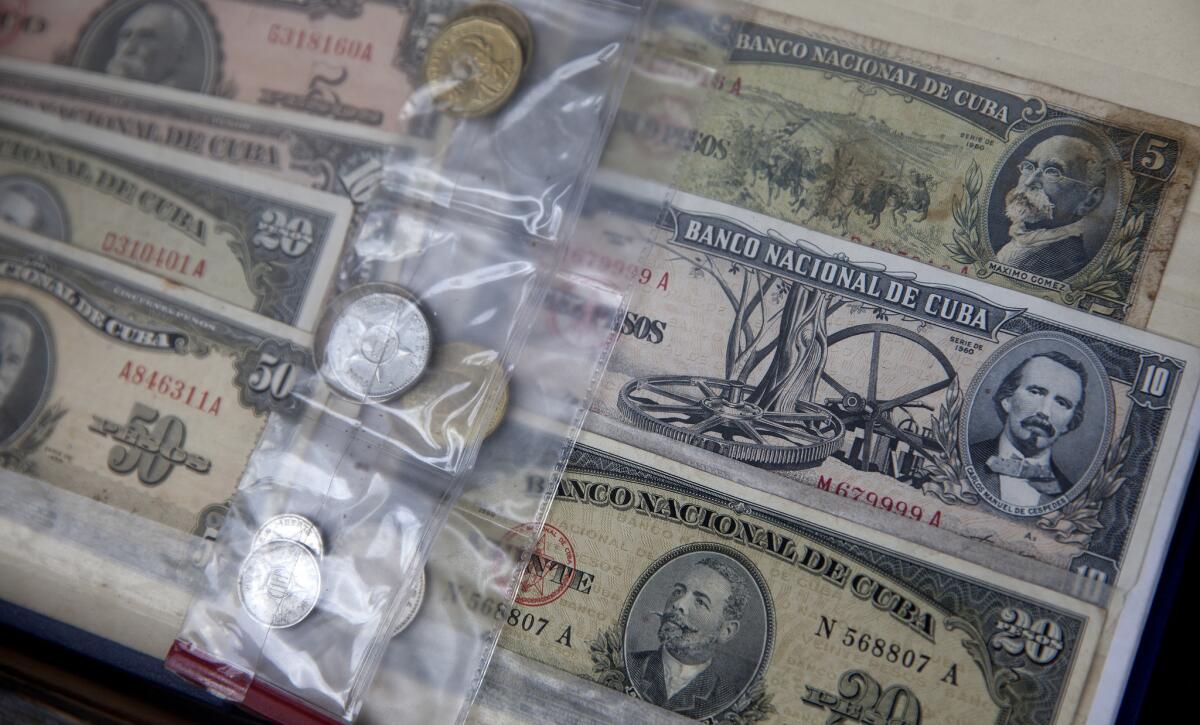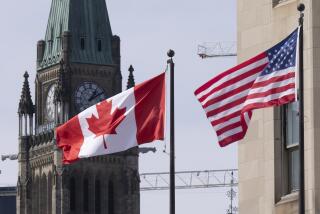Travel to Cuba: What you need to know

Pre-revolutionary Cuban coins and banknotes for sale in the Plaza de Armas, Havana Vieja, Cuba April 24, 2015.
Traditional vacations to Cuba — lazing on the beach all day, for instance, or stocking up on rum and cigars — have been forbidden by the U.S. government for more than 50 years, and still are. But since December the Obama administration has been easing some restrictions.
Here’s information on the types of trips permitted by U.S. law; the paperwork Americans need to travel to Cuba; recommended health precautions; getting there; currency; and what Americans can bring back:
The kinds of trips permitted by U.S. law: Under revised regulations that took effect Jan. 16, there are a dozen categories of travel that allow Americans to visit Cuba. The categories include family visits, professional research, religious activities, humanitarian efforts, performances, sports and journalism, but by far the most common category is educational or academic programs that include preplanned people-to-people contact. That’s the category most tour operators use when arranging trips for groups or individuals without family ties to the island.
Breaking news: U.S. drops Cuba from terrorism list
For more details from the U.S. Treasury Department: lat.ms/1OJkl8C and lat.ms/1EUwyCX
Among the many U.S. tour operators licensed by U.S. officials to offer people-to-people trips: Grand Circle Foundation (grandcirclefoundation.org); Insight Cuba (insightcuba.com); Smithsonian Journeys (smithsonianjourneys.org); National Geographic Expeditions (www.nationalgeographicexpeditions.com); and, in Long Beach, Distant Horizons (distant-horizons.com).
CUBA TRAVEL GUIDE: Photos | Cars | Facts and figures
The paperwork: Americans need a passport that doesn’t expire until at least six months after their Cuba trip is completed. (Cuban officials generally don’t stamp the passports of U.S. visitors.) The Cuban government requires U.S. tourists to apply for a visa (tourist card), a process that’s typically handled by U.S. tour operators on behalf of their clients. In theory, as an individual you could seek a visa through the Cuban Interest Section in Washington, D.C., but that route is a rarity so far. More information on the Cuban Interests Section at lat.ms/1bGRIH2.
Health precautions: Cuba requires all travelers to have medical insurance and typically bundles that coverage with the cost of a charter flight (which is then bundled into the overall cost of an organized tour). Travelers who reach the Havana airport without health insurance can buy coverage before passing through immigration. Info: lat.ms/1EUwC5w
The federal Centers for Disease Control and Prevention cites typhoid and hepatitis A as possible concerns in Cuba. Info: lat.ms/1JV5hxO
Getting there: Interjet and Aeroméxico (both based in Mexico), Avianca (based in Colombia) and Cuba-based Cubana fly to Havana from Mexico City. JetBlue has recently announced service from New York’s JFK to Havana starting July 3. Nonstop flights to Cuba on other U.S.-based carriers are expected to start in the next year or two as U.S. and Cuban aviation officials reach agreements. For now, charter carriers fly between the U.S. and Cuba. Web travel retailer Cheapair.com in April started selling tickets on Havana-bound charter flights from Miami (daily), Tampa, Fla. (twice weekly), and New York (generally weekly). Organized tours to Cuba often cost about $2,000 and up; airfare may not be included.
Currency: Until U.S. rules change, take cash — euros or Canadian dollars. Change them into Cuban convertible currency (CUCs) at Cadeca currency exchanges. American dollars can be changed too, but you are penalized about 10%. Credit cards of any sort aren’t in widespread use, especially outside tourist areas. American credit cards can’t yet be used; Cadeca is expected to accept them soon.
Accommodations: The easy-to-use website cubaccommodation.com covers all of Cuba, city by city. In Old Havana, rooms in private homes (casas particulares) are about $20 to $40 U.S. a night. A new option is AirBnB.com, but its prices tend to be higher. Hotels, especially historic ones, may be listed as luxury or five star, but the terminology doesn’t always translate.
What Americans can bring back: Under the new provisions, Americans are allowed to bring back up to $400 in goods for personal use from Cuba, but no more than a $100 combined total in alcohol and/or tobacco products.
To learn more about Cuba: Go to the website for Cuba’s tourist board in Canada, gocuba.ca.
Writer Catherine Watson contributed to this report.
More to Read
Sign up for The Wild
We’ll help you find the best places to hike, bike and run, as well as the perfect silent spots for meditation and yoga.
You may occasionally receive promotional content from the Los Angeles Times.







